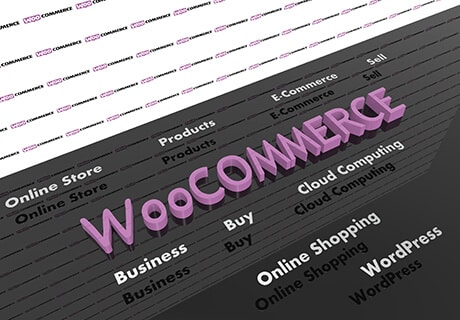Request a free quote
Guaranteed response within one business day

We are rated 4.8 out of 5 on average.

We are rated 4.8 out of 5 on average.
Trusted by Global Brands





WooCommerce vs Shopify – Which Ecommerce Platform is Ideal for Your Online Store?
Are you wondering which platform is ideal for your eCommerce store – WooCommerce vs Shopify? Here’s an ultimate comparison of Shopify vs WooCommerce that will help you choose the best-fit eCommerce platform for your business.
Both WooCommerce and Shopify are two of the most popular and easy-to-use eCommerce platforms available on the market. They have several advantages and can possibly be an ideal solution for your eCommerce store. And the best part of these platforms is that you can manage everything on your own, without hiring any professional designers and developers.
But, the question is which one of the two platforms will perfectly meet your business needs, Shopify, or WooCommerce for creating an outstanding eCommerce store? Which is more robust and feature-rich? Which is more flexible and cheaper? Which is appealing and easiest to work with?
There are lots of questions to ask before finalizing one for your store. Here we are going to answer them all in this comprehensive comparison of WooCommerce vs Shopify. After going through the key differences between Shopify and WooCommerce, you will know exactly which platform to choose based on your preferences and needs.
So, let’s compare Shopify vs WooCommerce to see which one is the best fit for your eCommerce business.

Shopify vs WooCommerce
| Shopify | WooCommerce | |
|---|---|---|
| Company Name | Shopify Inc. | Automattic Inc. |
| Launched on | 2006 | 2011 |
| Founders | Tobias Lutke, Daniel Weinand, Scott Lake | Mike Jolley, James Koster |
| Written in | Ruby | PHP |
| Free trial of the platform | 14 days | 15 days |
| Operating system | iOS – version 9.0 or later. Android – version 5 or later. | Unix-like, Windows |
| Data storage | MySQL, MySQLi | MySQL, MySQLi |
| License | Proprietary | GPL |
| Stable release | Continuous/SaaS | 4.5.2 (September 14, 2020) |
| Number of stores powered | 800,000+, currently 5300+ businesses on Shopify Plus. | 51,210+ |
| Ecommerce market share | 10.85% | 23.6% |
| Market distribution | 20% (Top 1 million sites), 21% (Top 10,000 sites), 21% (Top 100,000 sites) | 26% (Top 1 million sites), 5% (Top 10,000 sites), 12% (Top 100,000 sites) |
| Top brands | Nestle, Pepsi, Budweiser, The Economist, WaterAid, Gymshark, Sunday Somewhere, Penguin Books, Tesla Motors, Red Bull, etc. | J. Hornig, Porter & York, Cupcake Studio, Dineamic, Buddhi Baby, EcoKitty, Picky Bars, Apogee CE, Fitger’s Brewhouse, etc. |
| Apps, Extensions, Plugins | 2,400+ apps in the app store | 6000+ WooCommerce plugins |
| Themes | 1,200+ Shopify themes on ThemeForest, Shopify offers 100+ themes | 1,300 Woocommerce themes on ThemeForest. The WordPress.org theme repository has 1032 WooCommerce themes. |
| Ecommerce Approach | Shopify is fully hosted. It hosts and manages the software for you. While you do have a lot of flexibility, you’re limited to only making the changes that Shopify allows you to make. | WooCommerce is a self-hosted platform. Your store’s files are located on your own web server and you can customize everything on your store as you desire. |
When comparing WooCommerce vs Shopify, it is clear that both platforms come with their own sets of strengths and weaknesses. Let’s explore what are their pros and cons.
Shopify
| Pros | Cons |
|---|---|
| Transparency in pricing; you know exactly how much you have to pay per month | You need to pay on a monthly basis and the price is only going to get higher. |
| Cost-effective as the Shopify software takes care of web-hosting, coding, and maintenance issues. | Not ideal for blogging purposes |
| Access to thousands of apps | You don’t have much control over your site with Shopify. |
| Access to numerous customizable themes | Customization is better with other eCommerce platforms. |
| Reliable – provides 24/7 customer support via phone, email, live chat, etc. | |
| Quick to launch and easy to use | |
| Although Shopify doesn’t rank among the top-level blogging platforms, it allows for decent blogging efforts through its built-in SEO and marketing tools. | |
| Multichannel integration – sell on other channels like Amazon, Facebook, eBay, and Pinterest as a built-in feature |
WooCommerce
| Pros | Cons |
|---|---|
| Offer complete customization and control | You must at least have a basic knowledge of WordPress |
| Backed by a large community online | More expensive due to plugins, themes, and hosting |
| Access to countless themes and plugins | Since it is self-hosted, you need to manage everything from web hosting to security, and maintenance to backups |
| Simple and easy to configure on WordPress | |
| It is a free plugin | |
| WooCommerce is self-hosted, which means your store’s files are located on your own server. This gives you the freedom to modify everything on your store as you see fit |
Shopify
Shopify ensures transparency in pricing, and hence you can easily select the best-suited plan for your business.
| Basic Shopify All the basics for starting a new business. | Shopify Everything you need for a growing business | Advanced Shopify Advanced features for scaling your business | |
|---|---|---|---|
| Monthly Price | $29 | $79 | $299 |
| Credit Card Rates | |||
| Online | 2.9%+30 | 2.6%+30 | 2.4%+30 |
| In Person | 2.7%+0 | 2.5%+0 | 2.4%+0 |
| Transaction Fees | |||
| Using Shopify Payments | None | None | None |
| Using External Payment Gateways | 2.0% | 1.0% | 0.5% |
However, there are certain things that may contribute to the cost of your store:
- Premium themes – these are usually a one-time cost.
- Apps – many of these come with an additional monthly payment, however, you can also find free apps.
Besides, if you’re using an external payment gateway as noted in the pricing table above, Shopify will charge you more.
WooCommerce
It is difficult to determine the exact cost of WooCommerce store development because there are various scenarios and edge cases. Technically speaking, the only fixed costs include:
- Web hosting
- Your domain
- Transaction fees that you will pay your payment gateway
But you’ll also have to pay for:
- A premium theme
- Plenty of premium plugins
In the comparison of Shopify vs WooCommerce, WooCommerce is more advantageous as WordPress plugins often are a one-time payment, while many Shopify apps use recurring monthly charges.
When we compare WooCommerce vs Shopify, both platforms offer extensive lists of payment gateways. However, Shopify does charge an additional transaction fee if you’re using an external payment gateway. This can be a major concern because that fee can go as high as 2% along with what your payment gateway charges. Since WooCommerce is open-source and has a large plugin community, you can find numerous WooCommerce payment gateways.
Shopify
WooCommerce supports all the popular gateways like :
- Stripe
- PayPal
- Square
- Authorize.Net
- Amazon Pay
In the comparison of Shopify vs WooCommerce, some of these free features like CSV uploads, bookings, and shipping options will cost up to $500-600 with WooCommerce.
WooCommerce
- Allows to sell both physical as well as digital products including software and apps
- It’s also good for affiliate marketing
- Built-in payment gateways PayPal and Stripe available, and a range of other gateways available for an additional fee
- Adjustable shipping rates and taxes
- Stock levels control
- Mobile-friendly structure
- Unlimited number of products and product categories
- Gives you complete control over your data
- Compatible with your existing WordPress theme
- Hundreds of plugins (extensions) available
- A free Facebook ad and Facebook stores extension
As compared to Shopify, WooCommerce has a steeper learning curve. Shopify is an ideal option for amateurs as it is easier to learn and use. When talking about the ease of use, Shopify scores 4.1/5, and WooCommerce scores 3.5/5. Let’s dig deeper to see how Shopify and WooCommerce excel in terms of ease of use.
Shopify
Since Shopify is a fully hosted platform, you don’t need to install, manage, or update any software. You no longer have to worry about security, maintenance, backups, compatibility, and performance issues. Once you sign up, the software helps you pick a design for your website. After that, it helps you navigate through the software so that you can customize and add products easily.
Shopify provides an intuitive drag-and-drop user interface that helps you manage your products, sales, and inventory efficiently.
One drawback of this fully guided, and optimized user experience is that it limits your control over the website’s functionality. You can only use the web design and development tools provided by Shopify or add-ons available in their marketplace. However, this doesn’t affect the popularity of Shopify as for many users, the large selection of add-ons and themes provided by Shopify is sufficient to get started and scale the online store.
WooCommerce
Since WooCommerce is not a hosted platform like Shopify, you need to install it, manage updates, maintain backups, and ensure website security. There are numerous free and paid plugins that can automate all these tasks for you.
WooCommerce provides immense opportunities for customization. You get full control over the platform. You can integrate any possible functionality into your website leveraging more the 55,000 WordPress plugins.
Since WooCommerce does not come with a built-in drag-and-drop design-builder, you can use the WordPress page builders like Beaver Builder, however, it adds to your overall cost.
Another drawback of WooCommerce is that it comes with a learning curve and requires you to have hands-on knowledge of website development. You also need to create a merchant account or a similar service like PayPal or Stripe.
Even though the WooCommerce guided setup wizard is quite helpful, it is still lagging behind when it comes to the ease of onboarding and use of Shopify.
Both WooCommerce and Shopify offer stylish themes that give your websites a professional look and feel.
Shopify
Shopify’s theme store offers more than 100 free and paid themes for you to choose from. Since Shopify is a dedicated eCommerce platform, its themes are very polished and sales-driving.
The prices of premium themes start from $140. As this can be more expensive, many themes come with the one-off payment that you should consider as an investment in your online store.
If you don’t mind paying for the paid themes, you can choose one from them. However, if you’re tight on your budget, you can go with free themes to get started.
WooCommerce
Storefront, the entry theme of WooCommerce, is fully mobile responsive and comes with a clean and fresh layout. Since WooCommerce offers more flexibility of customizations, the look and feel of your designs depend on the hours that you’re willing to dedicate and your technical skills.
When comparing Shopify vs WooCommerce, Shopify’s templates are sleeker, polished, and fully responsive, unlike WooCommerce. You can customize your Shopify themes later if you want. WooCommerce, on the other hand, offers limitless customization, however, its themes are not quite up to scratch.
Shopify
- Automatic fraud analysis
- Embedded Oberlo integration
- Unlimited products
- Unlimited file storage
- Free SSL certificate
- Mobile commerce optimization
- Editable HTML and CSS
- Credit card payments
- Manual order creation
- Discount codes
- Blog module
- Multilingual support
- Adjustable shipping rates and taxes
- Customer profiles
- Dropshipping capabilities
- Physical and digital products in the store
- Unlimited traffic to your store
- Daily backups
- Site stats and product reports
- SEO-friendly site structure
- Individual product reviews
- Facebook selling module
- Social media integration
- Fully featured mobile app
- Product importing via CSV
files - Different product variations
- Print orders
- Inventory management
- Advanced reports (on Shopify
and Shopify Advanced plans) - Gift cards (on Shopify and Shopify Advanced plans)
- Abandoned cart recovery (on Shopify and Shopify Advanced plans)
In the comparison of Shopify vs WooCommerce, some of these free features like CSV uploads, bookings, and shipping options will cost up to $500-600 with WooCommerce.
WooCommerce
- Allows to sell both physical as well as digital products including software and apps
- It’s also good for affiliate marketing
- Built-in payment gateways PayPal and Stripe available, and a range of other gateways available for an additional fee
- Adjustable shipping rates and taxes
- Stock levels control
- Mobile-friendly structure
- Unlimited number of products and product categories
- Gives you complete control over your data
- Compatible with your existing WordPress theme
- Hundreds of plugins (extensions) available
- A free Facebook ad and Facebook stores extension
| Shopify | WooCommerce |
|---|---|
| Subscription-based tool/service + a complete suite of out-the-box eCommerce solution. | Free WordPress plugin, requires hosting and a working WordPress installation to run. |
| Major Points of Similarities & Differences | |
| You can sell everything (physical as well as digital products/services). | |
| You can use it online via the eCommerce store and offline through Shopify’s “Point of Sale” kit). | You can implement it online only via the eCommerce store. |
| 24/7 email, chat, and phone support. | Ticket support, forum support, and numerous blogs/resources online. |
| Closed platform – Offers limited customization of your store | Open-source – Limitless customizations. |
| Shopify controls your website’s functionality and data. | You get complete control over your website’s functionality. |
| Ecommerce Store Designs | |
| More than 100 designs available, 10+ of them are free. | Thousands of designs available through WordPress themes. |
| Mobile-friendly design structure. | |
| Other Major Similarities & Differences | |
| Web hosting included | No hosting included |
| Free subdomain included in each plan | No subdomain included |
| Free SSL certificate. | You can attach a free SSL certificate manually, however, many people pay for this service. |
| Unlimited file storage. | File storage capacity depends on your host. |
| Unlimited product selling | |
| Create or use coupon codes and discounts. | |
| Payment methods – PayPal, Stripe, credit cards, bank deposits, cash on delivery, and other methods. 70+ options available | Payment methods – PayPal, Stripe, checks, bank transfers, COD |
| Sales analytics and reports | |
| Provides native support for multiple languages | Multilingual support via third-party plugins. |
| Flexible shipping rates and taxes. |
Are You Looking for a Reliable Ecommerce Business Partner?
Contact UsSearch Engine Optimization Features
Features
- HTML catalogue
- Meta tagging
- RSS feeds
- SEO URLs
- Site map, XML
- Good relations, RDFa
Shopify
- Yes
- Yes
- Yes
- Yes
- Yes
- No
WooCommerce
- Yes
- Yes
- Yes
- Yes
- Yes
- Yes
When Should You Choose WooCommerce Over Shopify?
WooCommerce’s flexibility and control are what make it a premier choice over Shopify. If you’re planning to sell products that go beyond ‘simple’, either in terms of variations, pricing, or the checkout process, you should definitely go with WooCommerce.
Another reason to choose WooCommerce is that some products are banned from Shopify. Since it is a hosted platform, you need to agree to the terms and conditions of Shopify’s decision-making team that has witnessed some cosmetics brands get banned.
Lastly, if you prefer using WordPress and value its plugins and support, the WooCommerce solution is your best bet.


When Should You Choose Shopify Over WooCommerce?
Shopify is the most easy to use eCommerce store for beginners. If you are planning to sell simple products then Shopify is the right solution for you.
Moreover, if you don’t have enough time to manage a store or you are not confident about the technical stuff then Shopify’s simplicity and capabilities can come to your rescue.
It’s Completely Up to You
In the end, each eCommerce platform comes with its own set of pros and cons. If you are looking for ownership and flexibility then WooCommerce is the ideal solution for you and if you are looking for simplicity and ease of use then Shopify would be the best choice for you.
If you need help in choosing the right platform which best suits your store, then you may reach out to our eCommerce development experts of Orange Mantra.

FAQ’s
- While WooCommerce offers adequate online transactional security, it may not ensure high-end overall protection against cyber-attacks without taking additional precautions.
- Our WooCommerce experts do their best to ensure the security of your WooCommerce store.
- Have More Questions Related to the Comparison of Shopify vs WooCommerce? Get in Touch with Our Experts.